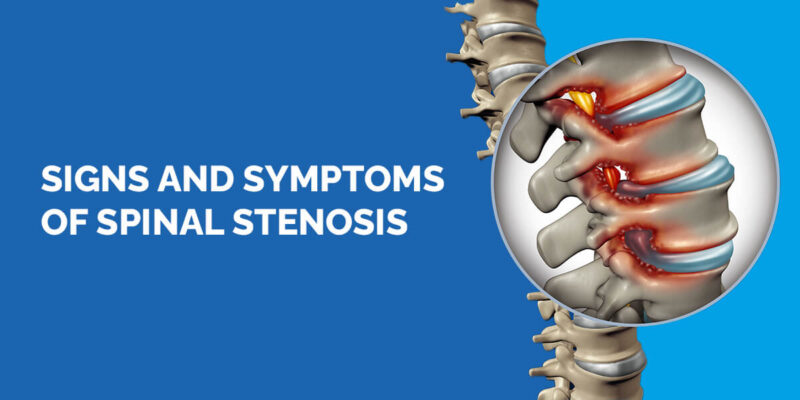

Spine problems affect you more than you might expect. Simple things like standing to cook dinner or going downstairs require considerable effort to perform. While many spinal conditions cause such problems, you could be dealing with spinal stenosis. Learn the signs and symptoms of spinal stenosis below and what can be done for it.
Spinal stenosis is a narrowing of your spinal canal — the space that houses your spinal cord. To understand spinal stenosis, you may benefit from a spine anatomy overview. First, your spinal column has 33 vertebrae bones stacked on top of each other, beginning at your skull base and ending at your pelvis. Each vertebra has a ring-shaped opening in itcs center, where the spinal canal passes through. Discs between each vertebra absorb shock and cushion the stack of vertebrae bones.
The spinal cord — the highway connecting the brain with the rest of your body — runs through the spinal canal. The spinal cord is a nerve tissue column covered by three protective membrane layers. Nerve roots exit the spinal cord through spaces between each vertebra. Those spaces are called the neural foramen—the nerves exit through each opening and travel throughout your body.
When spinal stenosis occurs, the narrowed spinal canal creates nerve and spinal cord pressure. The increased pressure can irritate, compress or pinch the spinal cord and nerves. Widespread issues in your spine and body may result.
Various spinal stenosis types exist, depending on the nerve compression and narrowing location. Spinal stenosis types involve two determining distinctions. The first distinction is whether it occurs in the cervical, thoracic or lumbar spine. The second distinction is if it happens in the vertebral foramen or neural foramen. Your vertebral foramen forms the spinal canal, while the neural foramen are bony openings between each vertebra. Your nerves exit the spinal cord through these bony openings.
Here are the four main spinal stenosis types:
In some cases, foraminal stenosis and central canal stenosis may co-occur. Thoracic spinal stenosis — mid-spine narrowing — is also possible but rarely occurs.
Spinal stenosis symptoms vary with type and condition severity. They also depend on location. You can experience pain and dysfunction at any point in your body below the level of compression. If you have lumbar spinal stenosis, you may experience symptoms like the following:
As the stenosis worsens, you may experience leg or foot weakness, linking spinal stenosis with walking problems. In severe cases, you may experience bladder or bowel incontinence. Lumbar spinal stenosis rarely causes cauda equina syndrome, which involves compressed cauda equina nerves. This bundle of nerves, including the sciatic nerve, is beneath the spinal cord. Cauda equina syndrome is a rare surgical emergency since it can cause permanent paralysis of the legs.
With cervical spinal stenosis, you may experience such symptoms as:
Spinal stenosis symptoms occur gradually and intermittently. The symptoms are more often experienced as pain than neurological deficits like numbness, tingling or weakness.
Knowing spinal stenosis causes and risk factors helps prevent this condition. Let’s go through the spinal stenosis causes and risk factors below.
Various injuries and conditions can cause spinal stenosis, including general wear and tear. Some common spinal stenosis causes include:
Some individuals are more at risk of spinal stenosis or conditions that cause it. Spinal stenosis risk factors include. Spinal stenosis risk factors include:
Spinal stenosis treatment involves surgical and nonsurgical options. Doctors pursue nonsurgical options first, opting for surgery only in severe cases or when conservative approaches fail. Nonsurgical spinal stenosis treatment options include:
Spinal stenosis surgery options include:
If any spinal stenosis signs or symptoms resonate with you, our skilled spine specialists at New York Spine Institute can successfully diagnose and treat your pain. For an appointment to treat your spinal problems, please feel welcome to contact us! We’ll promptly respond to your request with courteous service.